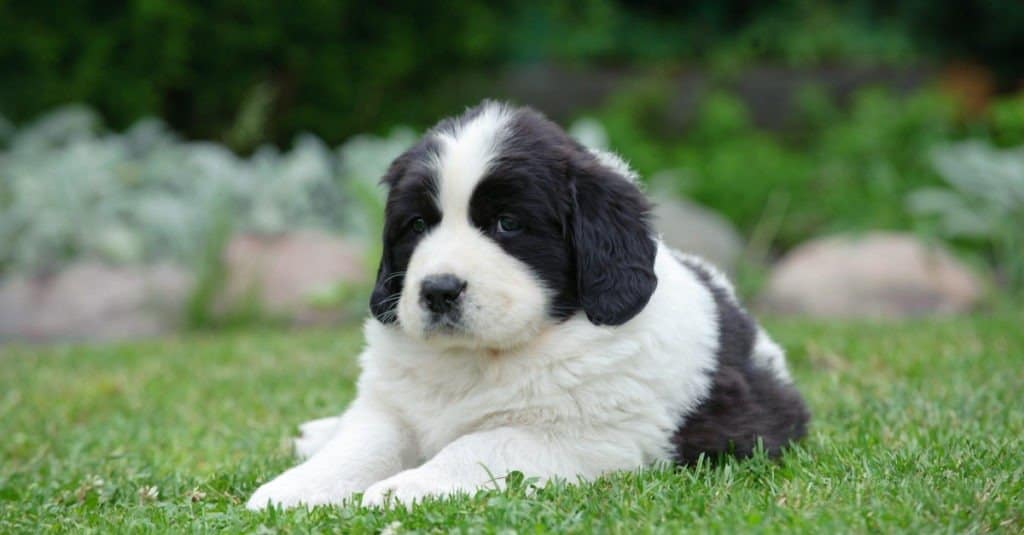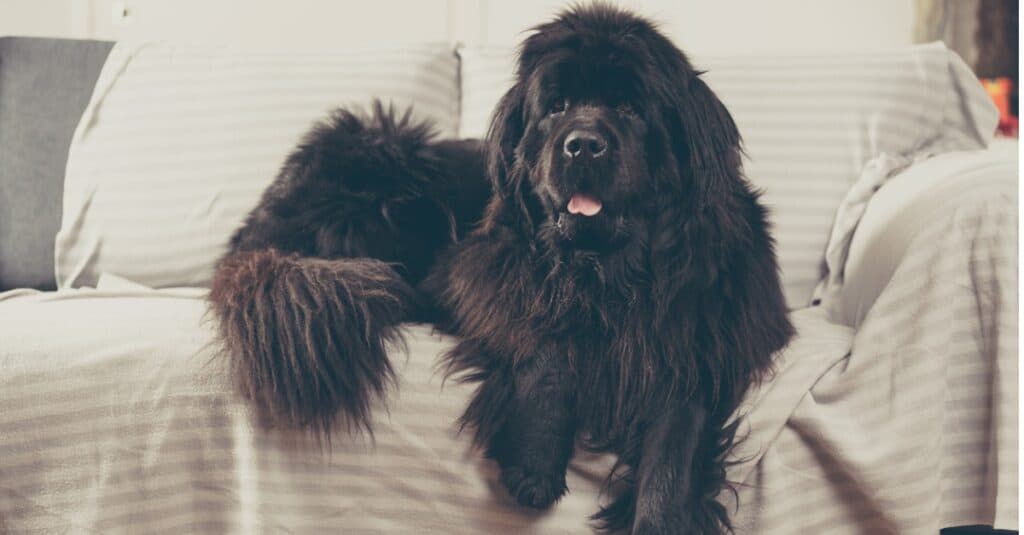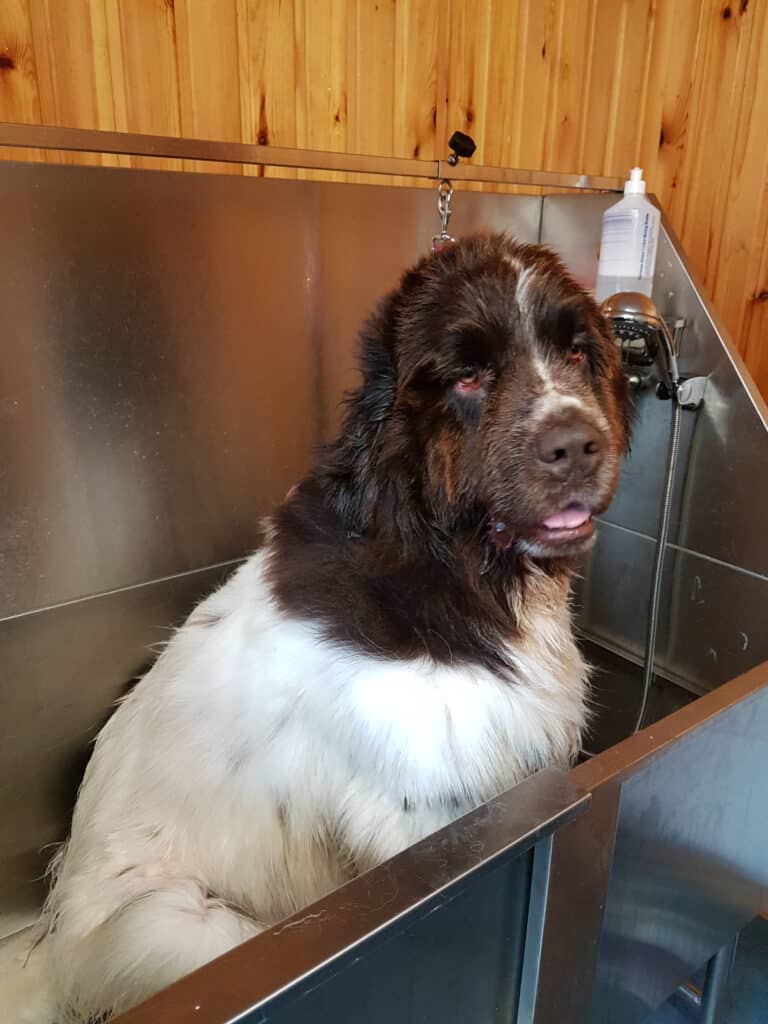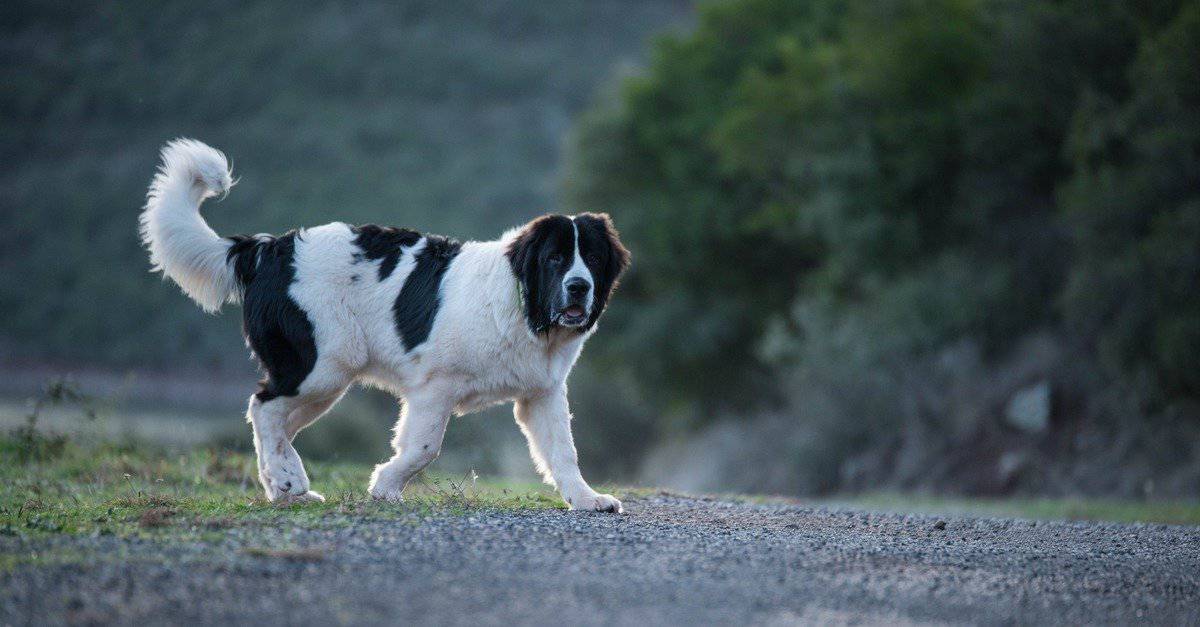Believe it or not, the Landseer and Newfoundland breeds of dogs are considered the same breed in the United States and Great Britain, but not in the rest of Europe. Newfoundlands are a breed of dogs, receiving their name from their original location.
Strong, friendly, loyal, and peaceful, these working dogs possess many great traits. They have webbed paws that mean they are good at swimming and thick double-layered fur to protect them from the cold. They are a powerful breed of dog.
Landseer dogs are the white and black version of the mighty Newfoundland, but that is not the case. They Europeans consider them their own breed for many reasons, which we will delve into within this article.
During the Victorian era, the black and white Landseer became more popular than its all-black counterpart, thus bred on its own due to its appearance. In modern times, dog breeders purposefully produce Landseers to match paintings of their Victorian counterparts. This is what eventually led to them becoming their own validated breed.

Landseers are a
breed of dog descending from the Newfoundland
, with a few key differences.
©Waldemar Dabrowski/Shutterstock.com
3 Key Differences
Newfoundland
Body Type: Massive dogs, with thick jowls and limbs, hefty with wavy fur.
Color: Mostly black but come in dark brown and white.
Temperament: Sweet, gentle, intelligent, loyal, brave.
Landseer
Body Type: Well-shaped dog with long legs and a more pointed head with curly fur.
Color: Black and white.
Temperament: Playful, patient, loyal, loving, thoughtful.
Body Types and Coloration

Newfoundlands tend to be black or dark brown, while the Landseer is white with dark markings.
©iStock.com/rzoze19
The Newfoundland is a beautiful specimen of canine. It has a large head, floppy cheeks, long tongue. Its ears fold over and they have a large, stocky body. It’s fur is dark brown or black and is thick and wavy.
The fur of the Newfoundland is oily, waterproof, and double-layered. The fur, along with its webbed feet makes it the perfect dog to traverse water. They also have a great lung capacity that makes swimming long distances easy for them. The heaviest Newfoundland in recorded history was a whopping 260 lbs.
The Landseer is almost a more elegant version of the Newfoundland. They are less stocky and more athletically shaped like a classic hound. Their fur is mostly white with patches of brown or black throughout to help classify them as their breed.
Landseers also have a more pointed houndlike head whereas the Newfoundland’s head is more square. Their legs are longer and they are less heavy, therefore they are clearly a different dog breed.
The coloration of the Landseer is due to specific breeding practices where they focused on bringing out a recessive trait called the piebald color allele. This is where the whiter fur came from Their fur is also far curlier and wiry as opposed to the thick waves of the Newfoundland.
A Landseer is more of a sport dog, even though they have a similar skillset of the Newfoundland they are more for showing off. The Newfoundland is a hard working dog, and the Landseer is a dog made from hard work.

Newfoundlands are known to be sweet-natured, while Landseers need more attention to stay calm.
©rzoze19/Shutterstock.com
Temperament of These Breeds
An essential aspect of any dog breed, temperament is part of what sets these two breeds apart. Over the years of separation and breeding, these dogs have both earned their own distinct sets of breed personalities.
A Newfoundland is a jovial dog to be sure, but they are also calm and collected. They understand the difference between urgency and simple joy, not turning everything into a party.
The Landseer is just as happy, and shows it more. They are likely to be skipping around with a tongue hanging out and to jump into the water out of joy.
A Newfoundland is classically a working dog, so they would be helping fishermen and running around on boats or out on the dock chasing fish their way. Known to be calm and understanding, far more than they should.
They are also quite often a nanny dog because of how sweet and gentle they are. If a Newfoundland is too excitable or aggressive will not show them because it is not the right breed characteristic.
For Landseers, their temperaments are bred to be similar but they do not possess the same sweetness as the Newfoundland. They have a very high IQ and are just as smart as their larger version, and are easy to train.
When a dog has a higher IQ that means not only do they understand what you are saying better, but they understand what you want as well, and they care about it. With that caring comes the ability to train in a way many other dogs just can’t be.
Like many smart dogs though the Landseer needs a lot of attention and stimulation or it can get into trouble.
While the Newfoundland is more calm and casual, the Landseer definitely wants to be playing, wants to be pet, and wants to stick its nose into everything you do. That doesn’t have to be a bad thing, just be sure to understand that they are a high-needs pet.
The large black swimmer, the Newfoundland, trusts very openly and easily. It doesn’t need a firm hand in the same way a Landseer does, just kindness and a gentle tone.

One thing that both the Newfoundland and Landseer have in common is that they need regular grooming. Daily brushing is recommended as their fur can become matted and they may shed everywhere.
©Dawn Kibble/Shutterstock.com
Training them is a different experience, but it’s no less rewarding when a dog trusts you and obeys you.
One thing that both the Newfoundland and Landseer have in common is that they need regular grooming. Daily brushing is recommended as their fur can become matted and they may shed everywhere.
They need their fur washed, conditioned, trimmed, and brushed, especially if you are not a fan of dog smell.
If you’re looking for a large teddy bear to take home, then look to the Newfoundland. If you desire a fun-loving large dog with energy and sweetness, then look to the Landseer.
Both dogs boast a sweet nature, a delicate touch, and a willingness to be trained. Just be sure you understand all the needs of these fantastic animals before taking one home.
Up Next
Ready to discover the top 10 cutest dog breeds in the entire world?
How about the fastest dogs, the largest dogs and those that are -- quite frankly -- just the kindest dogs on the planet? Each day, AZ Animals sends out lists just like this to our thousands of email subscribers. And the best part? It's FREE. Join today by entering your email below.
Thank you for reading! Have some feedback for us? Contact the AZ Animals editorial team.








